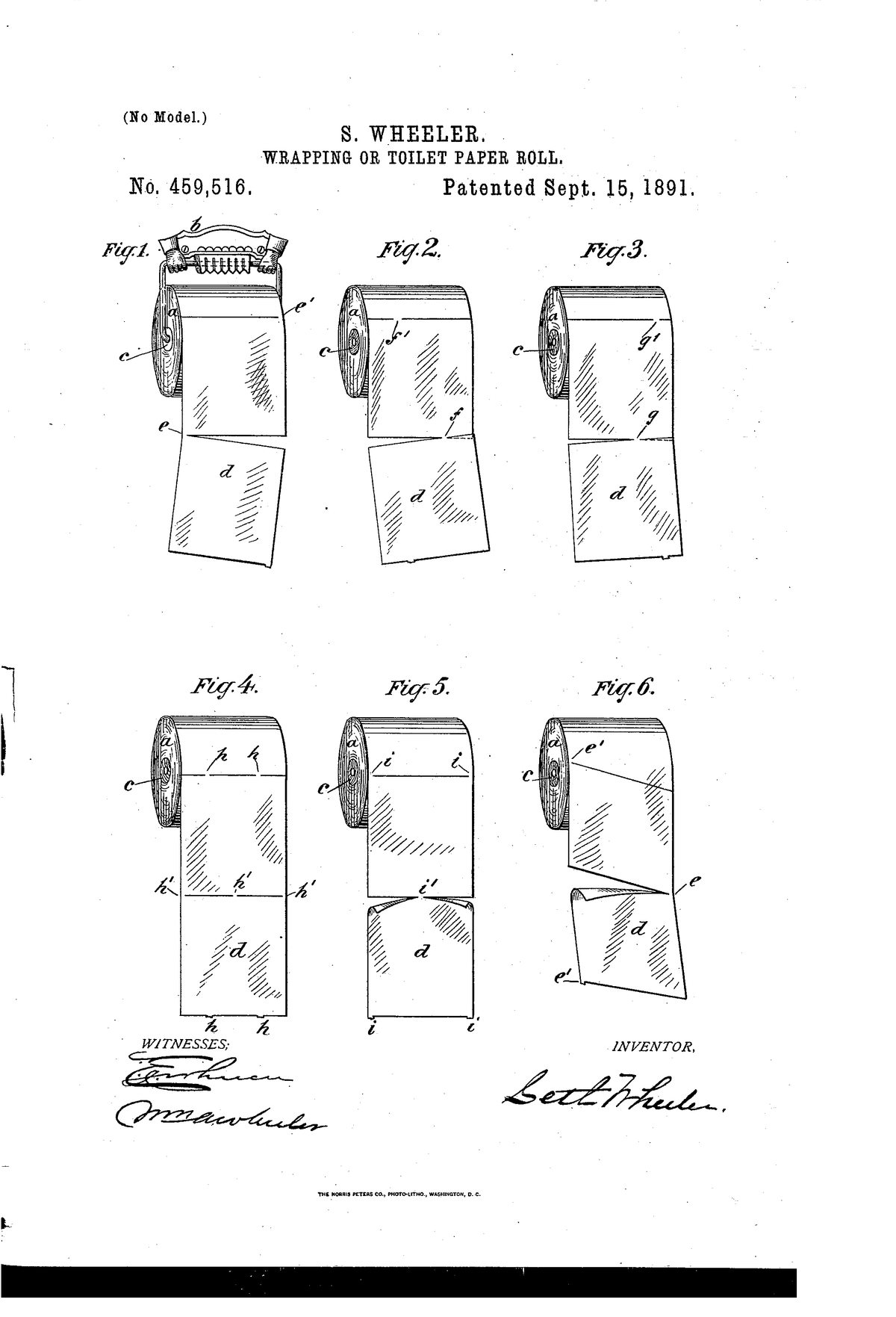In March 2015, The Next Web contributor Owen Williams stated on Twitter that he had discovered the definitive answer to an age-old debate over the proper orientation for hanging toilet paper on dispensers. The controversy (which boasts its own entry on Wikipedia) has long been weighted towards the “over” (rather than the “under”) side of the debate, but Williams provided additional data to support the former position:
The patent for toilet paper should settle the over vs under debate pic.twitter.com/arZl6l6ALn
— ⚡️ Owen (@ow) March 17, 2015
The image to which Williams referred was a patent filed in June of 1891 and published in September of that year by a man named Seth Wheeler for a then-innovative update to toilet paper:
My invention consists of a roll of paper for wrapping or toilet use so constructed that the points of attachment and severance between the sheets will be alternately out of parallel lines running through the whole body of the sheets, so that a pull upon the free end of the web will not be transmitted in a direct line through a series of sheets,but will be diverted by the spaces opposite the connecting points of the sheet pulled upon, thereby producing a transverse strain upon the next line of connecting points sufficient to break them.In carrying out my invention the sheets of paper are only partially separated, having their points of attachment arranged in a novel manner, whereby each sheet will easily separate from the series as it is drawn from the roll, there being no litter occasioned, and any waste of paper is thereby prevented.
The discovery of the toilet paper patent was predictably divisive: while some social media users felt that the image evidenced their favored method of toilet paper orientation, others observed that homes with cats or small children nonetheless had good reason to hang toilet paper in the “under” style.
Many pundits also noted that the image and its corresponding patent lacked a crucial bit of information: it bore no indication of where the mounting area lay in relation to the roll.
Some might argue that the although the toilet paper roll was deliberately depicted in a clearly outward-facing manner, that presentation was necessary to fully illustrate the functionality Wheeler sought to patent. In that respect the image merely represented the least obstructed view of the perforations involved, not a definitive answer as to whether Wheeler favored either toilet paper orientation as the “correct” one.
